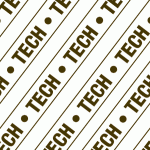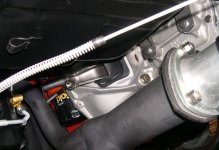Old Chevelles
Welcome to OldChevelles.com, built by Auto Enthusiasts for Auto Enthusiasts. Cars are not our only interests so please feel free to post about any subject the community might enjoy or you just feel you need to air.
We respect free speech and constructive dialogue however we don't allow threatening talk against members, nudity, or pornography. Threads are monitored and trolls are not tolerated.
This site is completely free and there are no costs. Please enjoy and provide feedback.You are using an out of date browser. It may not display this or other websites correctly.
You should upgrade or use an alternative browser.
You should upgrade or use an alternative browser.
Silicone brake fluid or not?
- Thread starter Andy69
- Start date
Chevelle_Nut
Shop Foreman
I would. I peeled paint off a nicely painted frame replacing a master cylinder.Brakes are all new including lines, so cross contamination isn’t an issue. Now would be the time to do it. The only benefit I can think of would be eliminating paint damage in case of leaks.
It never absorbs moisture. Great for cars that sit for extended periodsBrakes are all new including lines, so cross contamination isn’t an issue. Now would be the time to do it. The only benefit I can think of would be eliminating paint damage in case of leaks.
Silicone fluids, in addition to having high boiling points and being non-hygroscopic, do not damage paint as do glycol fluids. This is of particular importance in regard to show cars where a spill or leak of glycol fluid can have seriously ugly results. There are, however, some disadvantages to silicone fluids. They are slightly compressible, particularly near the higher end of their temperature range. While this is of absolutely no consequence for normal street use, this is why silicone fluids are not used in race cars. (Conversely, racing hydraulic fluids should not be used in street cars. This is because, although racing brake fluids have high dry boiling points, most are highly hygroscopic, and have relatively very low wet boiling points. They would probably work extremely well if you were to change the fluid every week or so.) Because air bubbles do not regularly dissipate in silicone brake fluid, special care must be used to prevent them from forming during pouring and bleeding operations. The best way to bleed a silicone fluid system is with an Eezibleed Kit (Moss #386-860). Lacking that, bleed with slow pedal strokes, avoiding “pumping” the pedal. It may be necessary to bleed the system again in a day or so if there were any air bubbles which wouldn’t bleed out the first time.
A newly rebuilt and scrupulously clean brake system filled with silicone fluid should outlast a system filled with glycol fluid by several times. There is little advantage in adding silicone fluid to a system which contains even small amounts of contaminants. Merely bleeding the system is not enough, as there will be pockets of old fluid and sludge which will not bleed out. Silicone fluid tends to concentrate any residual glycol fluid, moisture and sludge, into slugs, instead of allowing their dispersal throughout the fluid, as does glycol fluid. This can lead to relatively severe but localized problems, rather than the more general system deterioration experienced with old moisture-laden glycol fluids. This may be a factor in reports of leakage when silicone fluid is used in non-rebuilt systems which had been used with glycol fluid. A “new” system full of silicone fluid will require very little maintenance for years.

Last edited:
Derek69SS
Veteran Member
The downside to not absorbing moisture is that if any condensation ever occurs in your system, the water settles to the lowest point, (the calipers) and won't flush out because the water is on the bottom and the bleeder is on top, leaving you with a droplet of water with a 212deg boiling point, located right at the heat source.
DOT3/DOT4 absorbs moisture and will keep it suspended and spread equally through the whole system. The downside to that is it will draw moisture into the system over time, requiring flushing fluid as part of your maintenance.
I run DOT4 in everything, high-temp race stuff in the Chevelle, and cheaper parts-store stuff in everything else.
DOT3/DOT4 absorbs moisture and will keep it suspended and spread equally through the whole system. The downside to that is it will draw moisture into the system over time, requiring flushing fluid as part of your maintenance.
I run DOT4 in everything, high-temp race stuff in the Chevelle, and cheaper parts-store stuff in everything else.
I run Dot 5 silicone. Don't have to worry about corrosion
Or messing up my expensive paint job
Or messing up my expensive paint job
When I was detailing my undercarriage out I replaced everything that brake fluid would run through. Thank God I used silicone brake fluid because there was a time when if you replaced a combination valve there were quite a few that were failing. Sure enough I got one of the defective ones didn't even get to bleed the brakes went out to the garage the next day and saw a puddle of brake fluid on the floor right under the frame mounted combination valve. What a mess boy was I glad I used the silicone brake fluid because the freshly painted frame would have been a mess.
Attachments
I’ve been running dot 5 for 9 years no problems and it’s still a clear purple color.
Back in the 70's I swapped my Son's car over to Dot 5 brake fluid and while it worked well stopping wide, the pedal was a little mushy compared to Dot 4. When I did the Disc swap we went with Dot 4 again and the car stops great with a nice firm pedal. I am sure the Dot 5 fluid is much improved since I used it last.
DOT 3 also eats rubber, I had a leaking MC that dripped onto the rubber iso pads under my front springs (Tubular CA's) then had to pull the springs out to replace with Poly? pads, Wish I would've used DOT 4 or 5 when I replaced lines to SS brake lines, new MC and Wilwood adj P valve but use 3 instead, I might be switching calipers so maybe flush lines, replace MC and use 4 or 5 ?
Derek69SS
Veteran Member
DOT4 is compatible with 3, so you can just flush with 4.DOT 3 also eats rubber, I had a leaking MC that dripped onto the rubber iso pads under my front springs (Tubular CA's) then had to pull the springs out to replace with Poly? pads, Wish I would've used DOT 4 or 5 when I replaced lines to SS brake lines, new MC and Wilwood adj P valve but use 3 instead, I might be switching calipers so maybe flush lines, replace MC and use 4 or 5 ?
If you want to switch to DOT5 you need to run alcohol through all the lines and blow them out.
I very well appreciate Derek's points and echo if the car is to be driven for performance reasons, probably do not use DOT5. However, if it's going to be driven irregularly and you want the system to be stable for a lot of years, do use DOT5.
The first time I used it was on a '70SS Convertible I had. Everything in the system was new and I did not have any problems getting it bled using my method with a bottle full of brake fluid and a tube attached to each bleeder. Open bleeder, pump brakes, close bleeder, wheel done, repeat until job done.
The first time I used it was on a '70SS Convertible I had. Everything in the system was new and I did not have any problems getting it bled using my method with a bottle full of brake fluid and a tube attached to each bleeder. Open bleeder, pump brakes, close bleeder, wheel done, repeat until job done.

